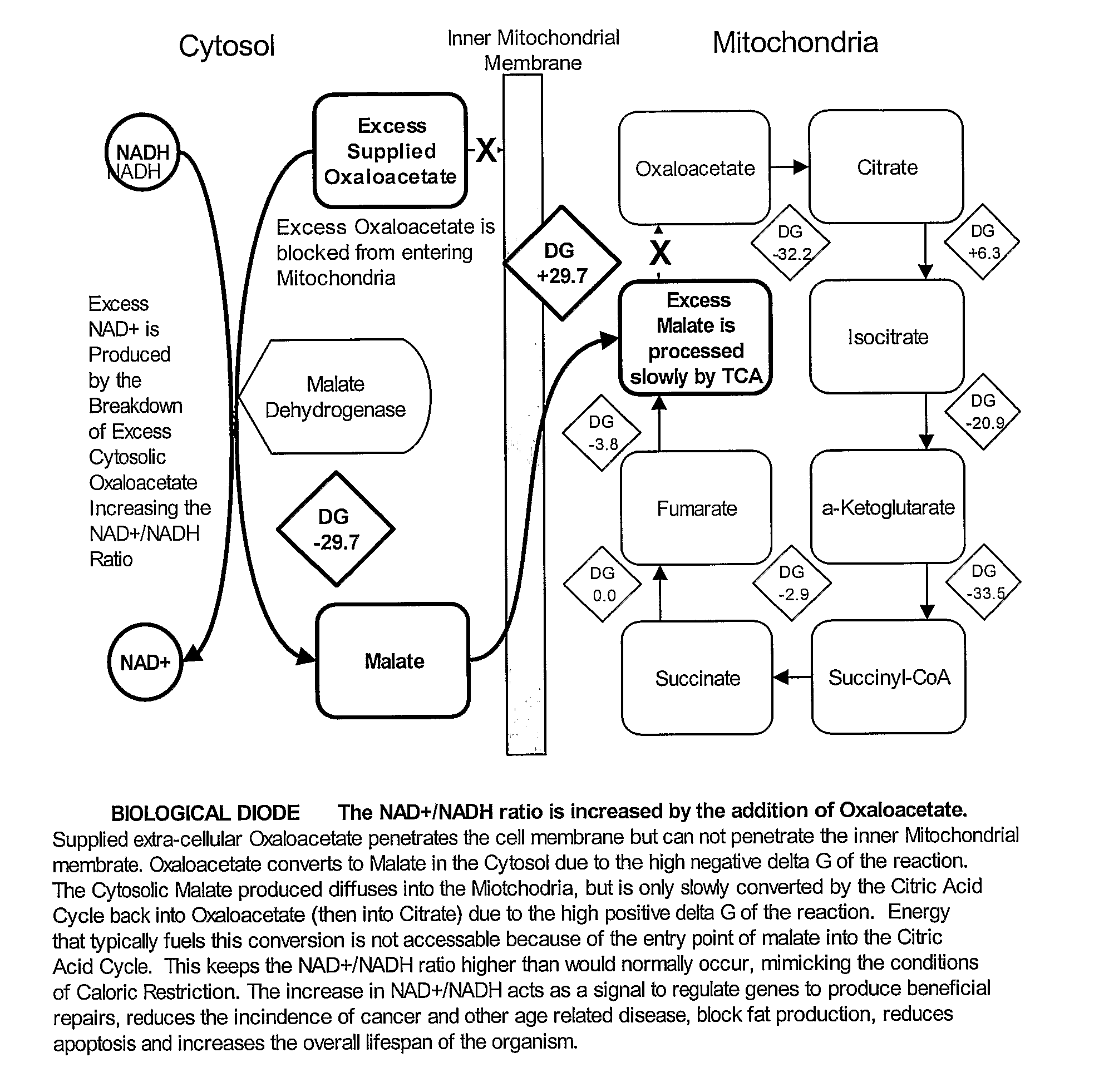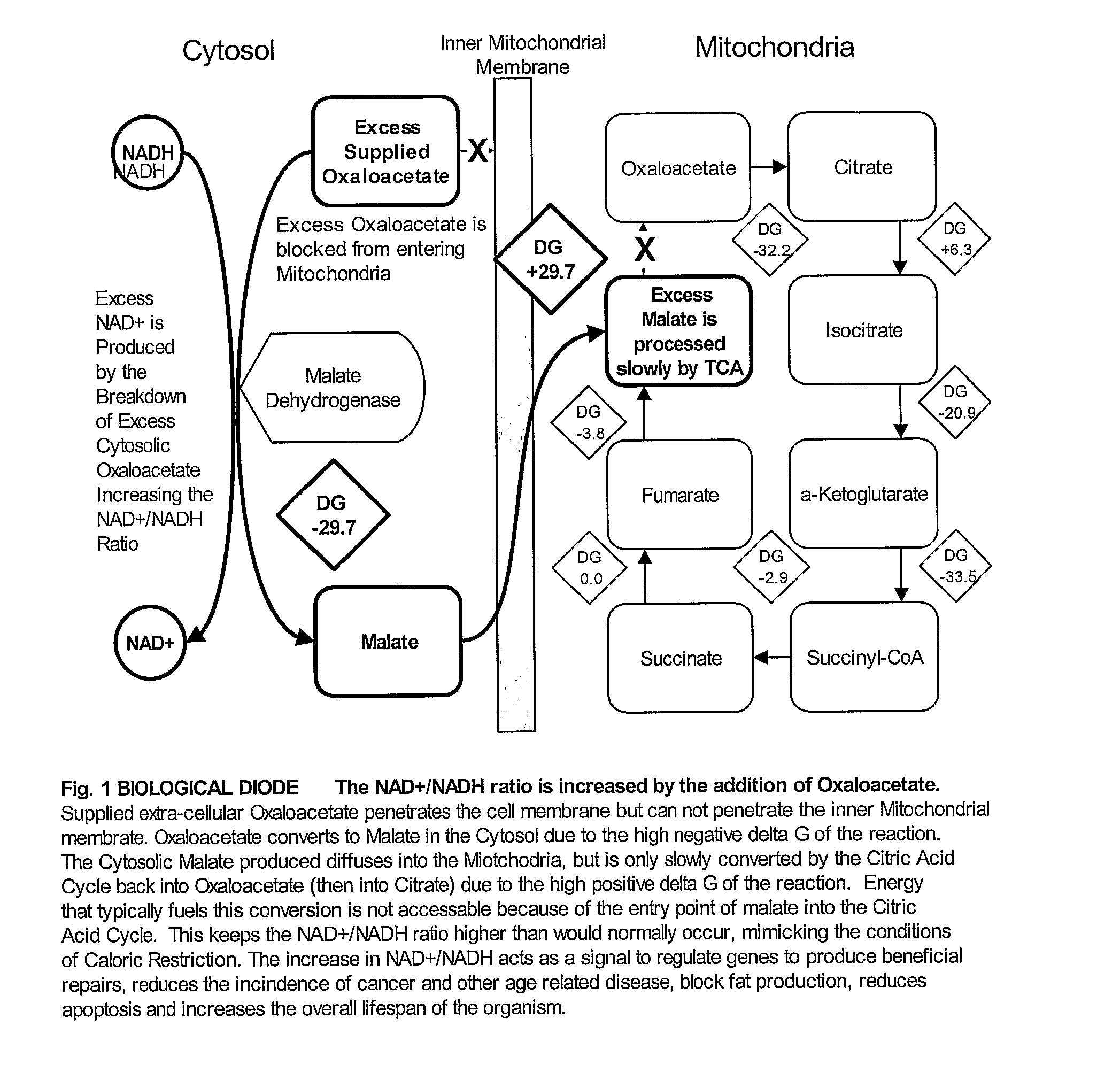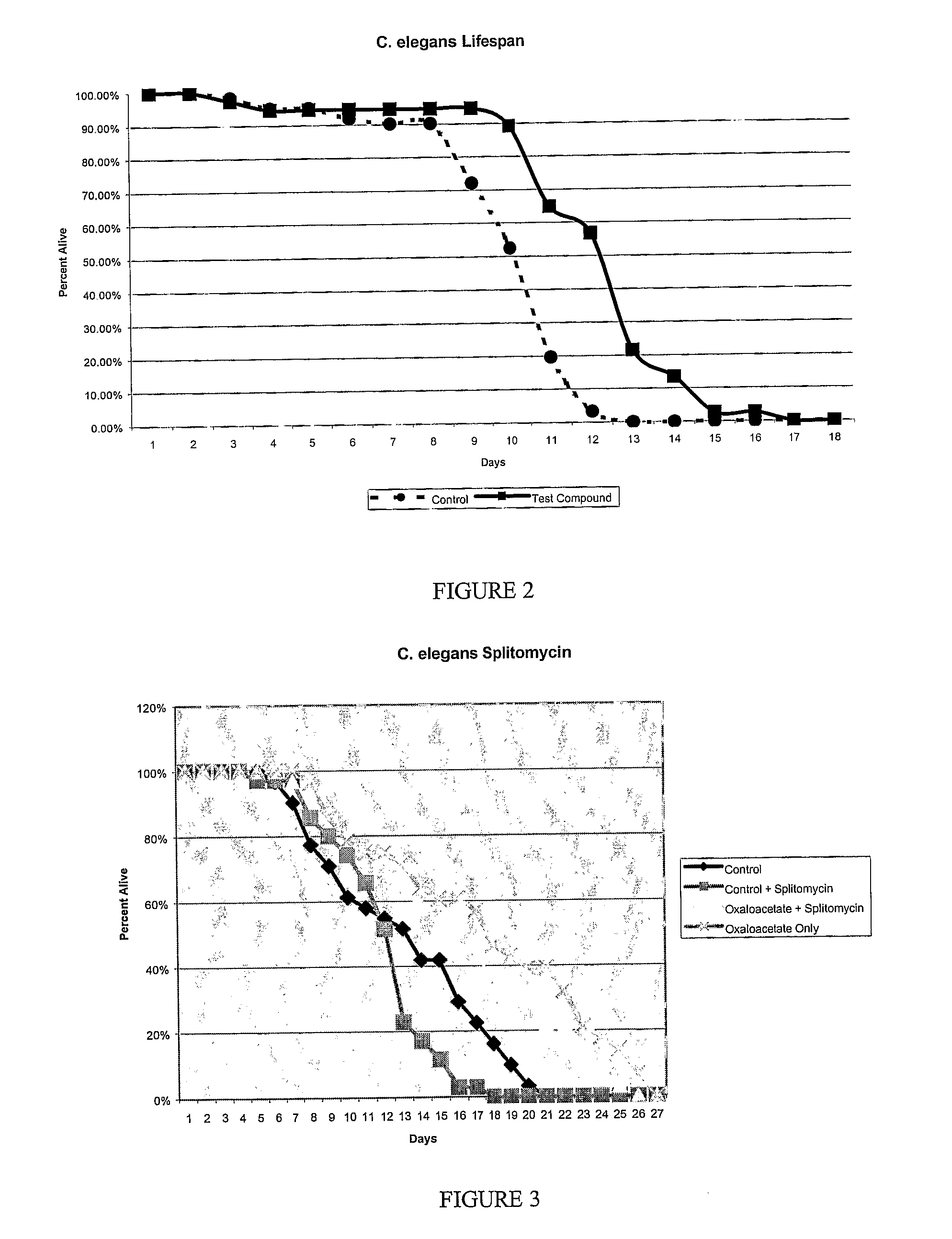Method for Extending Lifespan Delaying the Onset of Age-Related Disease
a technology of extending lifespan and delaying the onset of age-related diseases, which is applied in the direction of antimycotics, peptide/protein ingredients, and aerosol delivery, etc., can solve the problems of severe reducing lifespan, genetic engineering is hardly a well-understood field, and is unlikely to help increase the lifespan of humans. , to achieve the effect of reducing the symptoms of alcohol overdos
- Summary
- Abstract
- Description
- Claims
- Application Information
AI Technical Summary
Benefits of technology
Problems solved by technology
Method used
Image
Examples
example 1
[0098]The Caenorhabditis elegans nematode worm is commonly used as a test animal because its genetics are well understood and the basic cellular energy pathways are well conserved throughout all animal species, including humans. A test with these well-understood worms on metabolic energy pathways is a test on the animal kingdom. The conservation of the energy pathways is a reason that CR has worked in all animal species tested.
[0099]C. elegans (N2 wild type, from Carolina Biological Supply) was used as a test organism to assess the addition of oxaloacetate therapy (from Sigma Aldrich Company) applied to the cells to extend lifespan and to act as a caloric restriction “mimic”. The oxaloacetate was mixed in a concentration of 16 mM into the nematode growth agar (from Carolina Biological Supply Company) on eight experimental plates on which the C. elegans resides. A similar set of eight control plates with the same nematode growth agar was also prepared. Both the eight oxaloacetate pla...
example 2
[0104]The experiment in Example 1 was repeated for a range of oxaloacetate concentrations in the nematode growth agar. An increase in lifespan for C. elegans was seen at 2 mM oxaloacetate in the agar, and increased with 4 mM, 6 mM, 8 mM, 10 mM, 12 mM, 14 mM and 16 mM concentrations. The highest increase in lifespan was at 16 mM (approximate 25%) for the concentrations tested, and the lowest increase was a 2 mM (approximately 10%).
example 3
[0105]The experiment in Example 1 was repeated but additional plates containing splitomycin alone with the agar and splitomycin with oxaloacetate and the agar were also used. Splitomycin is a selective inhibitor for the Sir2 gene (Sir2a in yeast, Sirt1 in humans). The nematodes on plates with inhibited Sir2 function but no oxaloacetate lived for shorter periods than the control group as reflected in FIG. 3. FIG. 3 illustrates that similar to CR, oxaloacetate upregulates the Silent Information Regulator gene (Sir2) to increase lifespan. It also shows that other beneficial CR activated genes are upregulated and downregulated by oxaloacetate to increase lifespan without Sir2 activation. Nematodes on plates with oxaloacetate lived approximately 36% longer than the control group. Nematodes on plates with inhibited Sir2 function but also included oxaloacetate had an increased lifespan above the control group of 15%. This demonstrates that Sir2 makes up approximately ⅓ of the lifespan incr...
PUM
| Property | Measurement | Unit |
|---|---|---|
| weight | aaaaa | aaaaa |
| weight | aaaaa | aaaaa |
| body weight | aaaaa | aaaaa |
Abstract
Description
Claims
Application Information
 Login to View More
Login to View More - R&D
- Intellectual Property
- Life Sciences
- Materials
- Tech Scout
- Unparalleled Data Quality
- Higher Quality Content
- 60% Fewer Hallucinations
Browse by: Latest US Patents, China's latest patents, Technical Efficacy Thesaurus, Application Domain, Technology Topic, Popular Technical Reports.
© 2025 PatSnap. All rights reserved.Legal|Privacy policy|Modern Slavery Act Transparency Statement|Sitemap|About US| Contact US: help@patsnap.com



